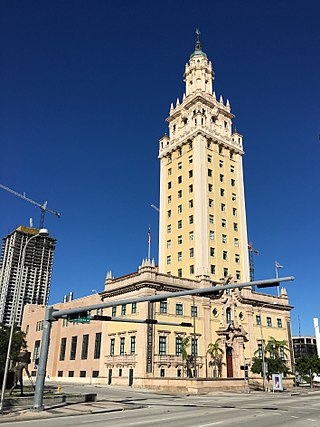
The Freedom Tower is a building in Miami, Florida. It was designed by Schultze and Weaver and is currently used as a contemporary art museum and a central office to different disciplines in the arts associated with Miami Dade College. It is located at 600 Biscayne Boulevard on Miami Dade College's Wolfson Campus.
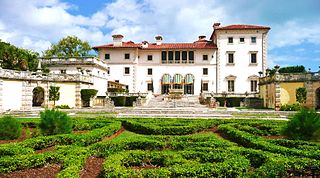
The Vizcaya Museum and Gardens, previously known as Villa Vizcaya, is the former villa and estate of businessman James Deering, of the Deering McCormick-International Harvester fortune, on Biscayne Bay in the present-day Coconut Grove neighborhood of Miami, Florida. The early 20th-century Vizcaya estate also includes extensive Italian Renaissance gardens, native woodland landscape, and a historic village outbuildings compound.

The Downtown Miami Historic District is a U.S. historic district located in the Central Business District of Downtown Miami, Florida.

Downtown Miami is the urban city center of Miami, Florida, United States. The city's greater downtown region consists of the Central Business District, Brickell, the Historic District, Government Center, the Arts & Entertainment District, and Park West. It is divided by the Miami River and is bordered by Midtown Miami's Edgewater, and Wynwood sections to its north, Biscayne Bay to its east, the Health District and Overtown to its west, and Coconut Grove to its south.

The Miami City Hospital, Building No. 1 is a historic hospital in Miami, Florida. The historic hospital, which is also known as The Alamo, is located at 1611 Northwest 12th Avenue. On December 31, 1979, the building was added to the U.S. National Register of Historic Places. It is known today as Jackson Memorial Hospital.

The Miami-Dade County Courthouse, formerly known as the Dade County Courthouse, is a historic courthouse and skyscraper located at 73 West Flagler Street in Miami, Florida. Constructed over four years (1925–28), it was added to the U.S. National Register of Historic Places on January 4, 1989. The building is 361 feet tall with 28 floors. When it was built, it was the tallest building in both the city of Miami and state of Florida.

The Palm Cottage is a historic home in Miami, Florida. It is the last known building in Miami directly associated with railroad magnate and developer Henry M. Flagler. It is also one of the city's few surviving examples of Folk Victorian architecture. Built around 1897, this house was one of at least 30 rental houses that Flagler constructed as homes for the workers building his Royal Palm Hotel. The building was moved to Fort Dallas Park in 1980, located at 60 Southeast 4th Street. On January 4, 1989, it was added to the U.S. National Register of Historic Places.

The Brickell Mausoleum is a historic mausoleum located in Miami, Florida at 501 Brickell Avenue. On January 4, 1989, it was added to the U.S. National Register of Historic Places.

El Jardin is a house located at 3747 Main Highway in Miami, Florida. It is listed on the U.S. National Register of Historic Places. El Jardin is now home to Carrollton School of the Sacred Heart in Miami, Florida. It was added to the U.S. National Register of Historic Places on August 30, 1974.
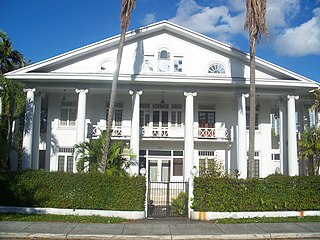
The J. W. Warner House is a historic home in Miami, Florida. It is located at 111 Southwest 5th Avenue. On June 1, 1983, it was added to the U.S. National Register of Historic Places.
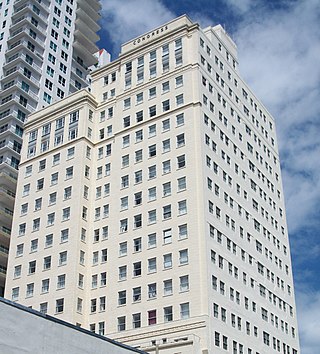
The Congress Building, or simply the Congress Building, is a historic skyscraper in Downtown Miami, Florida, United States. It is located at the address of 111 Northeast 2nd Avenue. The Congress Building was added to the National Register of Historic Places on March 14, 1985, and is locally identified a historic site in the Downtown Miami Development of Regional Impact (DRI). The Congress Building was formerly office space until 1999, when it was restored and converted to apartments. At street level, the building contains retail space which is leased to a number of stores and services including a financial establishment, The Loft condo sales center, beauty salon and café. Originally the building was five stories; the additional 16 were added on later.

The Walgreen Drug Store is a historic site in Miami, Florida. It is found at 200 East Flagler Street.

The Miami Women's Club is a historic site in Miami, Florida. It is located at 1737 North Bayshore Drive. On December 27, 1974, it was added to the U.S. National Register of Historic Places.

The Hahn Building is a historic site in Miami, Florida, United States. It is located at 140 Northeast 1st Avenue. On January 4, 1989, it was added to the U.S. National Register of Historic Places.

The Huntington Building is a historic site in Miami, Florida. It is located at 168 Southeast 1st Street. On January 4, 1989, it was added to the U.S. National Register of Historic Places.
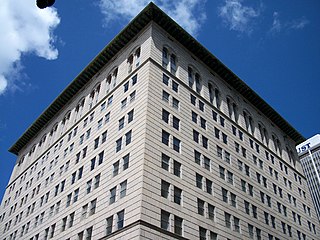
The Ingraham Building is a historic site in Miami, Florida. The location of the Ingraham Building is at 25 Southeast 2nd Avenue. On January 4, 1989, it was added to the U.S. National Register of Historic Places.

The Dr. James Madison Jackson Office is a historic site in Miami, Florida. It is located at 190 Southeast 12th Terrace. The first resident physician of Miami, Dr. James M. Jackson, had his office and surgery in this building. More recently, it became the offices of the Dade Heritage Trust. On February 24, 1975, the structure was added to the U.S. National Register of Historic Places. The building is located in the center of Brickell, near Downtown Miami. A great nephew, James Madison Barco, is named for Dr. Jackson.

The City National Bank Building is a historic bank building in Miami, Florida. It is located at 121 Southeast 1st Street.
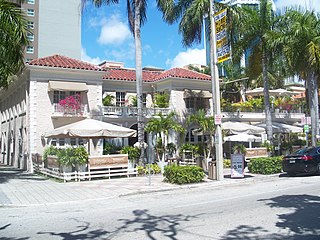
The Fire Station No. 4 is a historic fire station in Miami, Florida. It is located at 1000 South Miami Avenue. On March 8, 1984, it was added to the U.S. National Register of Historic Places.

The Opa-locka Thematic Resource Area is a group of thematically related historic sites in Opa-locka, Miami-Dade County, Florida, United States. The area comprises 20 surviving Moorish Revival buildings which are listed on the National Register of Historic Places. The buildings were designed in the mid-1920s by architect Bernhardt E. Muller as part of the development of Opa-locka by Glenn Hammond Curtiss, an aviation pioneer, and his development and sales company, Opa-locka Company. In developing Opa-locka, Curtiss sought to follow a theme inspired by the Arabian Nights. The designated buildings include the Opa-locka Company administration building, considered the anchor of the Opa-locka development, the Opa-locka railroad station, and the development's first commercial building, the Harry Hurt Building.



























